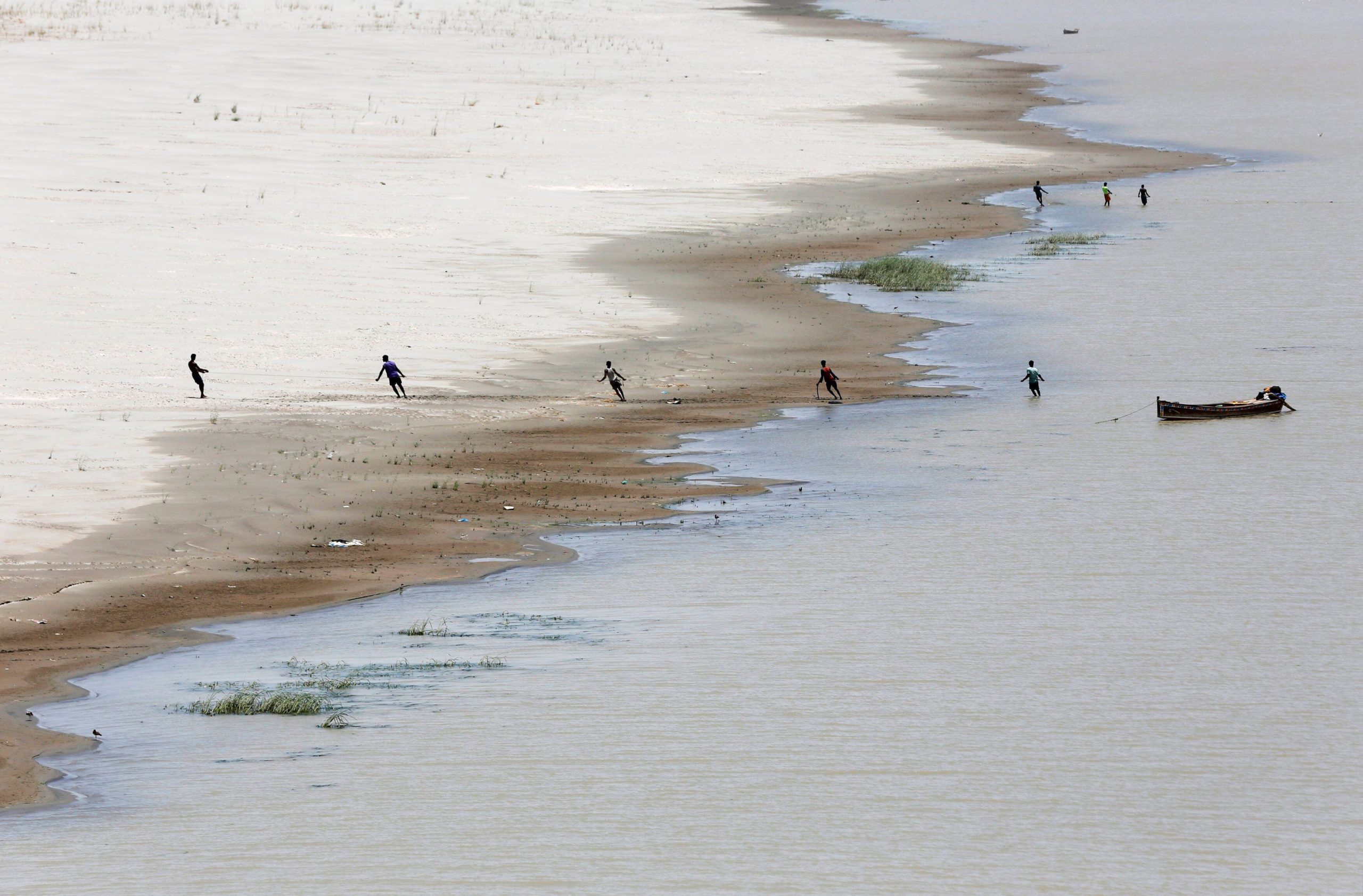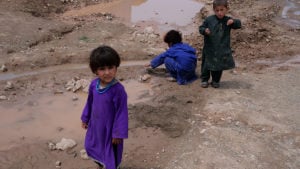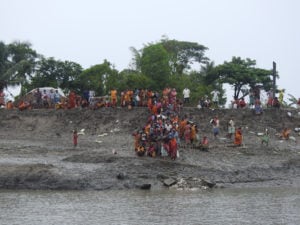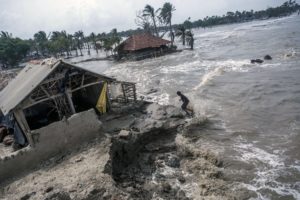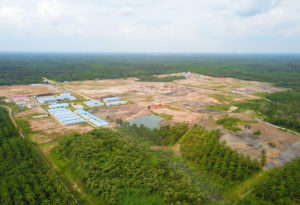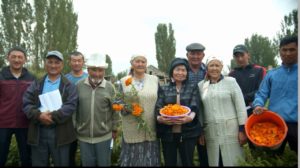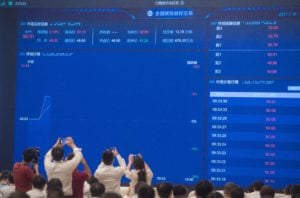In Pakistan, climate migration has become a growing reality. Not only is Pakistan consistently ranked among the top 10 most climate-vulnerable countries in the world, it is also not acting fast enough to combat the daily impacts of climate change. These range from erratic weather patterns and heatwaves to glacial lake outburst floods (GLOFs) that endanger and displace entire communities.
63 million
Number of people who could be displaced by climate change by 2050 in South Asia
The country has much to boast of in terms of its diverse topographic splendour. But many of its celebrated glaciers, rivers and deserts, coupled with overpopulation, have become a noose, steadily tightening around citizens, as global greenhouse gas emissions drive global warming to fatal degrees and trigger natural disasters.
A report from December 2020, ‘Costs of Climate Inaction: Displacement and Distress Migration’, puts South Asia’s climate migration crisis into perspective through numbers. It states that in 2020, more than 18 million people in the region were climate migrants. If global warming continues on its current trajectory and the global average temperature rises by 3.2 degrees Celsius, almost 63 million people will be displaced in Pakistan, India, Bangladesh, Nepal and Sri Lanka. Pakistan alone is expected to have around 2 million climate migrants by 2050, not including those who will be displaced due to the sudden onset of climate disasters, such as floods and cyclones.
To give an idea of the scale of the problem, the overpopulated city of Lahore is currently home to around 11 million people. This means that in less than 30 years, the number of people who need a new place to live in South Asia may be six times the current population of Pakistan’s second-largest city.
Most climate migrants are, and will be, displaced from rural areas and the coastal belt of Pakistan. Once in urban centres, climate migrants are likely to experience additional social hardships in the form of discrimination, competition for employment and precarious living conditions.
Climate change upends livelihoods
According to the 2017-18 Labour Force Survey, 39% of Pakistan’s population is dependent on agriculture, livestock-rearing and fisheries as the main source of livelihood. All of these are adversely impacted by climate change. Poverty is the strongest determinant for vulnerability to climate change, and also a major reason for displacement.
China and the US are unquestionably expediting climate change (as the world’s two biggest emitters of greenhouses gases, they are responsible for 27% and 11% of emissions, respectively), and Pakistan is quick to point out that it is not a big polluter. But being low on the global emissions list does not absolve the national government of its responsibilities to adapt to the domestic climate crisis.
Flawed and inequitable domestic government policies have fuelled the intensity of the global climate crisis in Pakistan. Climate migration from large tracts of Sindh and Balochistan is due to the absence of fresh water, without which locals cannot grow crops, rear animals or meet their daily domestic needs. However, the government’s stance to managing Pakistan’s water crisis remains the construction of more dams upstream, which will literally turn the southern parts of the country into barren wasteland.
Unless fresh water is released into the Indus upstream and allowed to flow to the Arabian Sea while carrying sediments, the intrusion of sea water will render the Indus Delta and its accompanying region infertile and uninhabitable.
A documentary called Natari (‘anchor’) brings to life the plight of climate migrants in Kharo Chan, a village in the internationally revered, yet locally destroyed, Indus Delta. One interviewee identifies the government’s discriminatory policy of building dams to serve the agricultural needs of a few provinces while Sindh starves, and says: “They talk about building a dam, but the river doesn’t even reach the sea.”
Pakistanis contribute less than 0.8% to global greenhouse gas emissions and are not responsible for climate change; on top of this, inequitable government policies have stolen their homes and livelihood.
Women bear the brunt of climate migration in Pakistan
There are no women in Natari. Even after multiple requests by the production team, men in Kharo Chan would not permit any interviews or footage of women and girls from their families. A woman’s plight, no matter how severe, remains hidden behind closed doors.
Yet climate change-induced migration in Pakistan impacts women disproportionately. It impacts their physical and emotional health and wellbeing, increases their domestic workload, hampers mobility and eliminates earning opportunities (most rural women work in the agricultural domain).
A 2019 Oxfam report, ‘Climate Induced Migration in Sindh, Pakistan’, identifies the everyday difficulties female climate migrants face. These include heightened exposure to wild animals, snakes and vector-borne diseases, vulnerability and sexual harassment, non-existent privacy and the constant emotional turmoil of having to leave their homes.
Dignified movement, not just towards a glittering city but towards a safer future, should be the right of every climate migrant
In Pakistan, where climate migration itself is absent from national discourse, its impacts on women hardly cross the minds of policymakers. The solution to tackling the problem holistically is rooted in gender-responsive policies and their implementation. This will be possible after the government invests in and collects high-quality, grassroot-level and gendered data.
Every climate migrant’s dream has been replaced with a nightmarish struggle for survival. Their painful, real-life stories in documentaries such as Natari are just one way to raise awareness and influence policymakers.
We cannot reverse climate change, but we can put in place effective resilience measures, equitable water management, gendered adaptation and disaster-relief policies and social-protection measures, including those that help diversify sources of livelihood for women affected by climate change. Dignified movement, not just towards a glittering city but towards a safer future, should be the right of every climate migrant.
Correction: An earlier version of the story incorrectly stated the projected number of climate-displaced people in Pakistan by 2030. The error is regretted.
